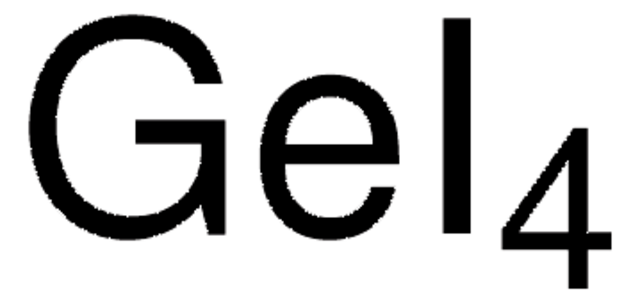463027
Germane
electronic grade, ≥99.997%
Synonym(s):
Germanium tetrahydride, Germanium(4+) hydride, Monogermane, Tetrahydrogermane
About This Item
Recommended Products
grade
electronic grade
vapor density
1.53 (−142 °C, vs air)
Assay
≥99.997%
form
gas
impurities
<0.5 ppm Oxygen (O2)
<1 ppm Carbon monoxide + Trigermane (CO+Ge3H8)
<1 ppm THC
<1 ppm Water (H2O)
<2 ppm Carbon dioxide (CO2)
<2 ppm Nitrogen (N2)
<20 ppm Digermane (Ge2H6)
<5 ppm Chlorogermanes
<5 ppm Germoxanes
<50 ppm Hydrogen (H2)
bp
−88.4 °C (lit.)
mp
−165 °C (lit.)
transition temp
critical temperature 35 °C
SMILES string
[GeH4]
InChI
1S/GeH4/h1H4
InChI key
QUZPNFFHZPRKJD-UHFFFAOYSA-N
Features and Benefits
Recommended products
Signal Word
Danger
Hazard Statements
Precautionary Statements
Hazard Classifications
Acute Tox. 2 Inhalation - Acute Tox. 4 Oral - Flam. Gas 1A - Press. Gas Compr. Gas
Storage Class Code
2A - Gases
WGK
WGK 3
Flash Point(F)
Not applicable
Flash Point(C)
Not applicable
Personal Protective Equipment
Certificates of Analysis (COA)
Search for Certificates of Analysis (COA) by entering the products Lot/Batch Number. Lot and Batch Numbers can be found on a product’s label following the words ‘Lot’ or ‘Batch’.
Already Own This Product?
Find documentation for the products that you have recently purchased in the Document Library.
Our team of scientists has experience in all areas of research including Life Science, Material Science, Chemical Synthesis, Chromatography, Analytical and many others.
Contact Technical Service









